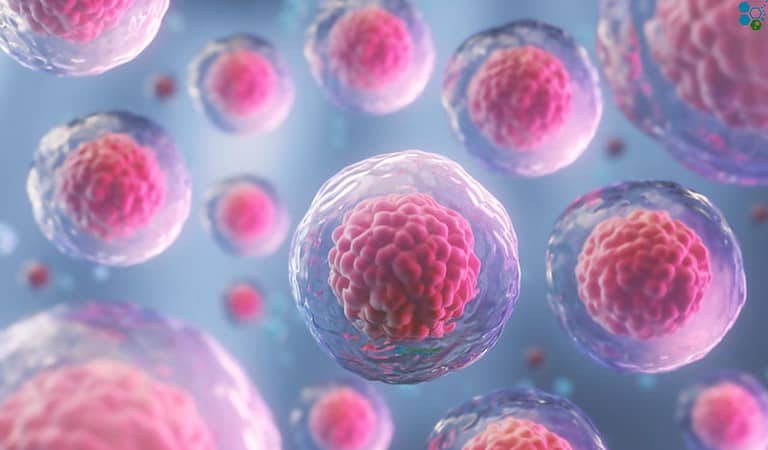
Undifferentiated cells refers to a cell that has yet to develop into a particular cell variant. Undifferentiated stem cells are the very basic cells in biology that all other cells derive from. The very first few cells in an embryo are considered undifferentiated.[1]
Stem cells are basically undifferentiated cells that have the unique ability to produce many different types of cell lines. By the very definition large undifferentiated carcinoma cells lack either glandular or squamous differentiation.[2]
The term is the opposite of differentiated cells and is usually used to help describe tissue or cells that have not used paracrine cell signalling to become specialized into a particular function or structures as adult stem cells. Undifferentiated cancer cells are dangerous and often grow and spread quickly.[3]
Undifferentiated cells, often referred to as stem cells, hold a unique position in the hierarchy of cellular development. Unlike specialized cells that perform specific functions, undifferentiated cells have the potential to develop into various types of cells. This feature makes them indispensable in both natural developmental processes and artificial interventions like regenerative medicine.
Undifferentiated cells play a fundamental role in development, tissue maintenance, and regenerative medicine. Understanding their properties and how to control their differentiation pathways will be critical for advancing medical science and healthcare.
[1] ^ Hu, Kexiang, Feihu Zhao, and Qingkang Wang. 2013. Mechanical characterization of living and dead undifferentiated human adipose-derived stem cells by using atomic force microscopy. Proceedings of the Institution of Mechanical Engineers. Part H, Journal of engineering in medicine, no. 12 (September 17). doi:10.1177/0954411913503064. https://www.ncbi.nlm.nih.gov/pubmed/24044923
[2] ^ Louthrenoo, W, S Boonyaratavej, R Sittiwangkul, and W Sukitawut. 1998. Anti Ro/SSA positive undifferentiated connective tissue disease in a mother with a newborn with complete congenital heart block: a case report. Journal of the Medical Association of Thailand = Chotmaihet thangphaet, no. 8. https://www.ncbi.nlm.nih.gov/pubmed/9737117
[3] ^ Watthanaworawit, Wanitda, Paul Turner, Claudia Turner, Ampai Tanganuchitcharnchai, Allen L Richards, Kevin M Bourzac, Stuart D Blacksell, and François Nosten. 2013. A prospective evaluation of real-time PCR assays for the detection of Orientia tsutsugamushi and Rickettsia spp. for early diagnosis of rickettsial infections during the acute phase of undifferentiated febrile illness. The American journal of tropical medicine and hygiene, no. 2 (June 3). doi:10.4269/ajtmh.12-0600. https://www.ncbi.nlm.nih.gov/pubmed/23732256.
Zombie cells, also called senescent cells, are non-dividing cells that accumulate in the body due to stress or damage, resisting… Read More
Chimeric antigen receptor-T cell treatment (CAR-T cell therapy) holds immense potential to revolutionize organ transplantation, particularly for patients who struggle… Read More
In the ever-evolving landscape of nutrition science, the discourse around dietary fats has undergone significant transformation. The Regeneration Center is… Read More
New research shows that specific types of brain cells become active after brain injuries and exhibit properties similar to those… Read More
Chemokines, critical components in the immune system, are small proteins that facilitate the migration and positioning of immune cells throughout… Read More
Stem cell research examines everything from gene expression to differentiation capacities to therapeutic potentials. With such diverse data types and… Read More